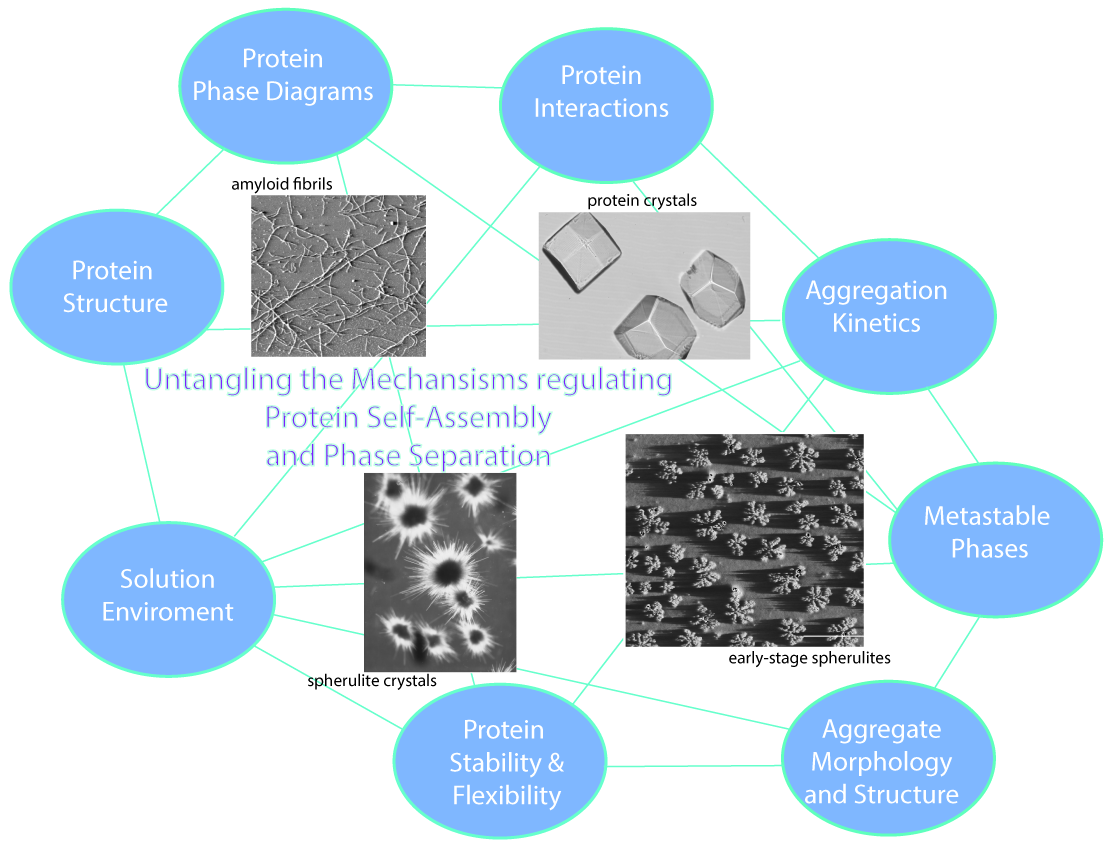
Welcome to the Muschol Lab!

Protein Self-Assembly and Phase Separation
Proteins represent the nanotechnology of biological systems. They are the molecular machines underlying nearly all essential biological functions ranging from metabolism, motility, gene expression, and sensing to information processing. Frequently, proteins need to assembly into superstructures many times the size of individual molecules in order to perform their function. Examples of such cellular superstructure are the cytoskeleton or stress granules. Understanding protein aggregation is also important for growing protein crystals for X-ray structure determinations. Another biomedically relevant example is the formation of amyloid fibrils, a process associated with human diseases ranging from Alzheimer’s disease to type II diabetes. My laboratory is studying the various molecular and environmental conditions that regulate protein self-assembly and phase separation phenomena.